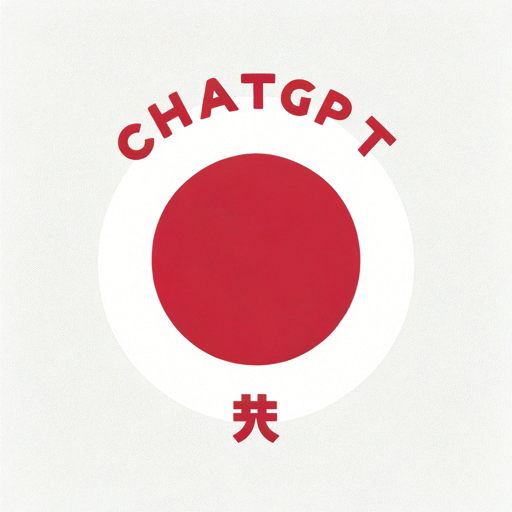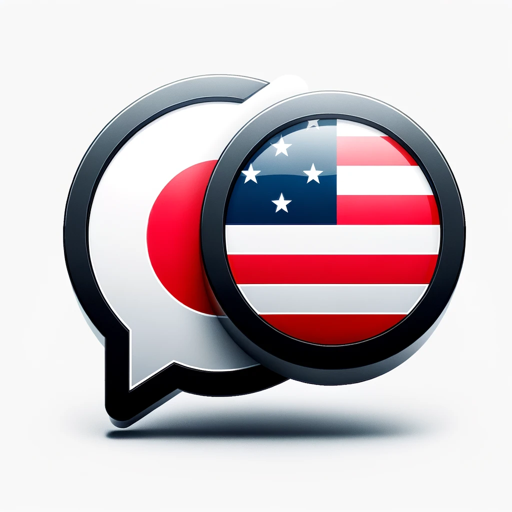東京インバウンド翻訳:日本語から中国語・英語・韓国語に一括意訳 by 銀座ファンイー-AI-powered translation service.
AI-powered translations for inbound tourism.
[指示]次に入力する文章を翻訳
[質問]都バスに乗ってゆったり都心を観光する方法
[質問]銀座で歴史的な街並みを探検する方法
[質問]節分の楽しみ方について
Related Tools
Load More
日本語 | ログイン 🇯🇵
ChatGPT 日本語 | ChatGPTとAIで日本語で会話

Japanese Translater
Japanese-English Translator GPT

English Email
Translates Japanese text into English accurately.

Language Translation (EN-JP)
Translate between languages, and be told whether your original translation sentence was natural or not to a native speaker. Perfect for language learners!

日本語翻訳専門
中国語から日本語への翻訳を専門とする

英和翻訳H
科学英文を適切な用語で日本語に翻訳します。特徴としては、1) 「だ・である調」で翻訳する。2) 最初に研究分野を確認し、以後はその分野の用語を使用して翻訳する。3) 英単語の後にコンマと日本語が続く文だけが入力された場合、以後はその英単語を対応する日本語で翻訳する(単語登録機能)。4) PDFからコピーした際に生じる不自然な改行などを修正する。5) 学習させた単語対の出力: Tell me the combinations of English and Japanese words you have be
20.0 / 5 (200 votes)
Introduction to 東京インバウンド翻訳:日本語から中国語・英語・韓国語に一括意訳 by 銀座ファンイー
東京インバウンド翻訳 is a specialized translation service designed to assist inbound tourists visiting Japan, particularly in Tokyo. The service focuses on translating information from Japanese into three main languages: Simplified Chinese (zh-cn for mainland China), Traditional Chinese (zh-tw for Taiwan), English, and Korean. Its core function is to facilitate communication for businesses like restaurants, hotels, shopping malls, and cultural landmarks, ensuring that non-Japanese-speaking visitors can easily access relevant information. The design emphasizes not only literal translation but also cultural and contextual adaptation, ensuring that translated content is easy to understand and suits the linguistic and cultural nuances of each audience. For example, when translating a menu from a restaurant in Tokyo's Ginza district, 東京インバウンド翻訳 would ensure that food items are not only translated by name but also explained in a way that fits each audience's familiarity with Japanese cuisine. This helps tourists from China, Taiwan, Korea, or English-speaking countries make informed choices without language barriers. Another scenario could be a guided tour description, where the service ensures that important cultural or historical nuances are properly conveyed in a way that resonates with the specific cultural context of the reader.

Main Functions of 東京インバウンド翻訳
Multilingual Translation (Japanese to Chinese, English, Korean)
Example
A shopping mall in Tokyo needs to translate all its directory signs, promotions, and service information into Simplified Chinese, Traditional Chinese, English, and Korean.
Scenario
Tourists visiting the shopping mall can navigate the space easily, access information on store promotions, and use facilities like restrooms or customer service counters without confusion. This is especially useful for Chinese and Korean-speaking tourists who may not be fluent in English.
Cultural Adaptation
Example
A traditional Japanese inn (ryokan) wants to provide a booklet explaining the cultural etiquette of using an onsen (hot spring).
Scenario
Rather than directly translating phrases, the service explains the cultural importance of certain practices, such as bathing before entering the onsen, and conveys the subtleties in a way that avoids confusion or misunderstanding for visitors unfamiliar with Japanese customs.
Simplified Information for Non-Native English Speakers
Example
A tourist attraction in Tokyo offers an audio guide in multiple languages, including English. The service ensures that the English used is simple and easy for non-native speakers.
Scenario
Tourists from various countries who speak English as a second language can follow the guide more easily, allowing them to understand complex historical or cultural information presented during the tour.
Ideal Users of 東京インバウンド翻訳
Local Businesses in Tokyo Catering to Foreign Tourists
Restaurants, hotels, and shopping malls that frequently interact with tourists from China, Taiwan, South Korea, and English-speaking countries can greatly benefit from these services. These businesses need accurate, culturally sensitive translations of their menus, services, and promotional materials to ensure a smooth and welcoming experience for foreign visitors.
Tourism Agencies and Travel Services
Tourism agencies or guided tour services that operate in Tokyo and cater to international visitors will find value in translating brochures, websites, and itineraries into multiple languages. By using this translation service, they can ensure their content is clear, informative, and accessible to a diverse range of tourists.

How to Use 東京インバウンド翻訳:日本語から中国語・英語・韓国語に一括意訳 by 銀座ファンイー
1
Visit aichatonline.org for a free trial without login, also no need for ChatGPT Plus.
2
Prepare your text in Japanese, ensuring it's relevant to the type of content you want to translate (e.g., tourism guides, business documents).
3
Paste the Japanese text into the input box, and select which languages you want it translated into (Simplified Chinese, Traditional Chinese, English, Korean).
4
Ensure proper context and localization are maintained. For example, adjust cultural references or specific terms if needed, as the tool specializes in conveying natural, context-aware translations.
5
Review and download your translated content. Make any necessary manual edits for stylistic preference or technical accuracy.
Try other advanced and practical GPTs
Tricycle
AI-Powered Task Mastery

Pixel Art Styler
Transform images into pixel art with AI

Lookify.io - Reverse Phone Number Lookup
AI-powered phone number intelligence.
Probability Theory and Statistics GPT
AI-powered Probability and Statistics Assistance

Character Builder (Yodayo Tavern)
AI-powered character creation for immersive storytelling

Toronto Criminal Defence Lawyers
AI-powered legal support for criminal cases.

英文文法精修大師
Enhance your writing with AI-powered grammar correction.

Multiple Search Results
AI-powered Comprehensive Search Insights

ASMR AI
AI-Powered Sensory Art and Communication

Renewable Energy GPT
AI-powered renewable energy insights.
Hypnotist
AI-powered hypnosis for relaxation and focus.

ZAID for Saudi Investments!
AI-powered Saudi investment consulting.

- Business Documents
- Academic Papers
- Tourism Content
- Restaurant Menus
- Promotional Materials
Q&A about 東京インバウンド翻訳:日本語から中国語・英語・韓国語に一括意訳 by 銀座ファンイー
What types of content can I translate with this tool?
You can translate tourism-related content, business documents, restaurant menus, academic papers, and promotional materials, making it ideal for various industries catering to international visitors.
Does this tool require a subscription?
No, you can use the tool for free without needing to subscribe or log in. There's also no need for a premium plan like ChatGPT Plus.
What makes this translation tool different from others?
This tool focuses on high-quality, culturally accurate translations for inbound tourism. It uses AI to localize content for Chinese, English, and Korean-speaking audiences visiting Japan.
How accurate are the translations?
The translations are optimized for natural flow, context, and cultural appropriateness, but you may need to review specific technical terms or industry jargon for precision.
Can I customize the output language style?
Yes, the tool adapts language style based on the target audience, such as using mainland Chinese (Simplified Chinese) or Taiwan's dialect (Traditional Chinese).